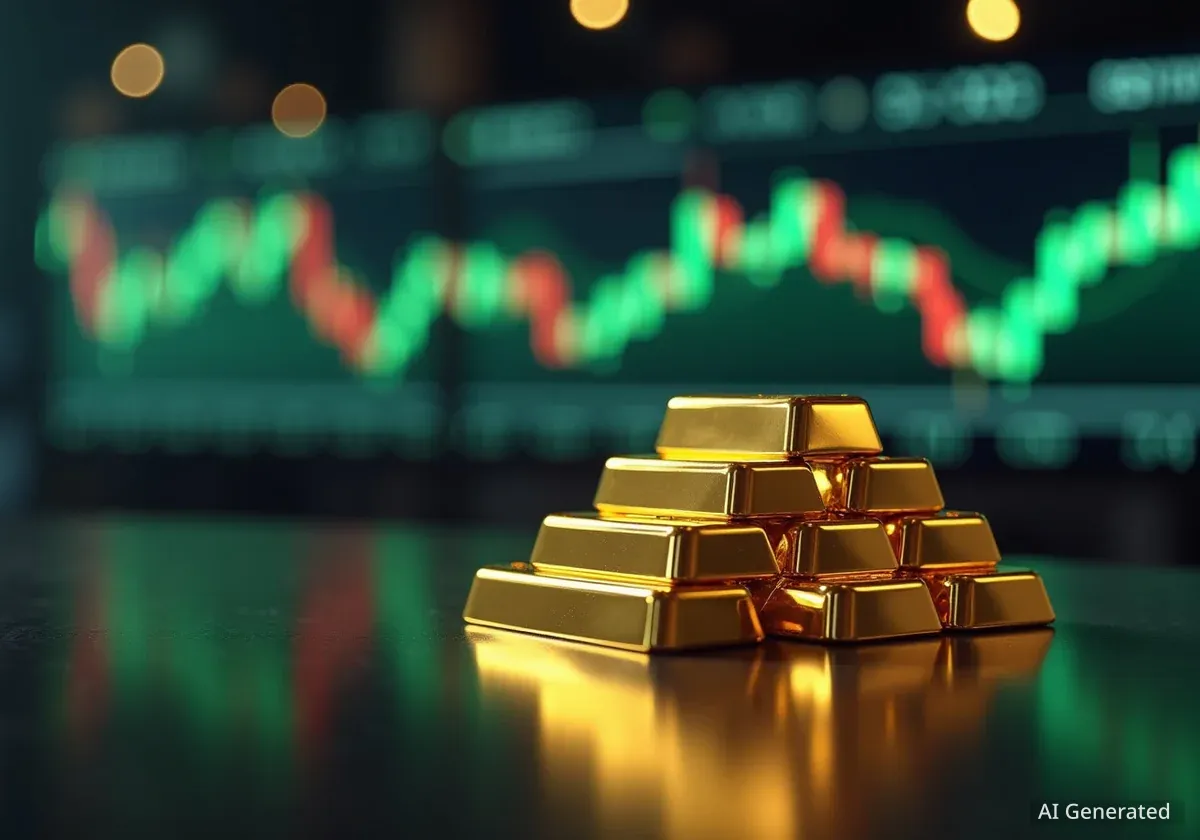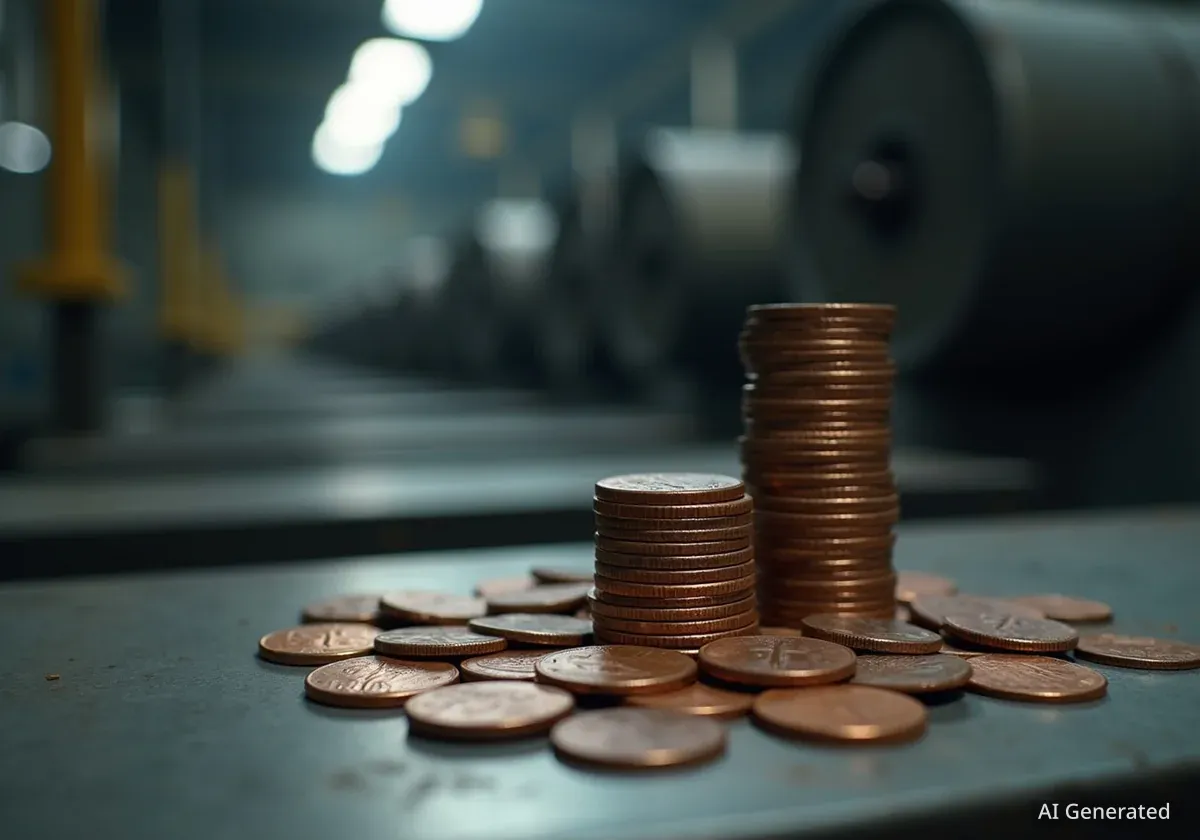Gold prices reached new all-time highs on September 22, driven by investor expectations of future interest rate cuts and persistent global economic uncertainties. On the Multi Commodity Exchange (MCX), gold futures for October delivery climbed to a record Rs 1,11,472 per 10 grams, while December contracts also set a new peak at Rs 1,12,575 per 10 grams.
Key Takeaways
- Gold futures on the MCX set new lifetime highs for both October and December contracts on September 22.
- The price surge is largely attributed to investor speculation about potential interest rate cuts by the U.S. Federal Reserve.
- Additional factors supporting gold include ongoing inflation concerns, slowing U.S. economic growth, and strong demand from central banks.
- Prices for 24-carat gold varied across major Indian cities, with Chennai recording the highest rate at Rs 1,13,020 per 10 grams.
Gold Futures and Spot Prices Climb
The precious metals market saw significant activity as gold prices continued their upward trend. The surge was most evident in the futures market, a key indicator of investor sentiment and future price expectations. The October futures contract on the MCX reached an unprecedented Rs 1,11,472 per 10 grams, marking a significant milestone for the commodity.
Similarly, the December futures contract, which reflects longer-term expectations, also broke records by touching Rs 1,12,575 per 10 grams. This synchronized rise in both near-term and longer-term contracts indicates strong bullish sentiment across the market.
Understanding Gold Futures
Gold futures are standardized contracts where a buyer agrees to purchase a specific quantity of gold at a predetermined price on a future date. They are traded on exchanges like the MCX and are used by investors for hedging against price risk or for speculation on future price movements.
City-Wise Gold Rate Variations
The increase in futures prices was mirrored in the spot markets across India, although rates varied by city due to local taxes and demand. On September 22, the price for 10 grams of 24-carat gold reflected these regional differences.
- Chennai: Rs 1,13,020
- Delhi: Rs 1,12,730
- Jaipur: Rs 1,12,730
- Lucknow: Rs 1,12,730
- Ahmedabad: Rs 1,12,630
- Mumbai: Rs 1,12,580
- Kolkata: Rs 1,12,580
- Bengaluru: Rs 1,12,580
- Hyderabad: Rs 1,12,580
Prices for 22-carat gold, which is more commonly used for jewelry, also saw a corresponding increase, with Chennai again leading at Rs 1,03,600 per 10 grams.
Economic Factors Driving the Rally
Several macroeconomic factors are contributing to the current strength in gold prices. Analysts point primarily to the expectations surrounding monetary policy from the U.S. Federal Reserve. According to a report from Axis Securities, market participants are anticipating further easing of monetary policy.
"Gold jumped 1.1% as traders bet on two more rate cuts from the Fed before year-end," the Axis Securities report noted on the market's reaction.
Lower interest rates tend to be bullish for gold. They reduce the opportunity cost of holding non-yielding assets like gold and can also weaken the U.S. dollar, making gold cheaper for buyers using other currencies.
Central banks around the world have also been significant buyers of gold, adding to their reserves as a way to diversify away from the U.S. dollar and hedge against geopolitical and economic risks. This consistent demand provides a strong floor for gold prices.
Expert Analysis on Gold's Outlook
Market experts suggest that the conditions for a sustained gold rally remain favorable. Ross Maxwell, Global Strategy Lead at VT Markets, identified several key bullish signals that support a positive long-term outlook for the precious metal.
"The deceleration of U.S. economic growth, enduring risks associated with inflation, robust demand from central banks, and projections of additional rate cuts later this year collectively bolster gold's long-term prospects," Maxwell explained.
This combination of factors creates an environment where investors often seek safe-haven assets. Gold has historically served this purpose, preserving wealth during times of economic turbulence, currency devaluation, and high inflation.
Potential Risks and Long-Term Projections
Despite the strong upward momentum, analysts also caution about potential short-term risks that could temporarily pull prices down. The market's current pricing is heavily dependent on the Federal Reserve acting as expected. Any deviation from this path could trigger a correction.
Maxwell elaborated on these potential headwinds, stating, "Should reduction expectations be pushed back, or if economic indicators remain better than forecast, gold may come under further strain." A stronger-than-expected economy could lead the central bank to delay or reduce the number of anticipated rate cuts, which would likely strengthen the dollar and weigh on gold prices.
However, the long-term view remains largely positive. The same factors that could cause short-term volatility are also the catalysts for future gains. "Longer term, however, should cuts in rates occur, inflation remain at elevated rates, or the dollar weaken, gold may regain steam and reach new highs once more," Maxwell concluded.
Investors will be closely watching upcoming economic data releases, particularly inflation figures and employment reports, as well as communications from Federal Reserve officials for clues about the future direction of monetary policy. These indicators will be crucial in determining whether gold can sustain its record-breaking rally in the months ahead.





